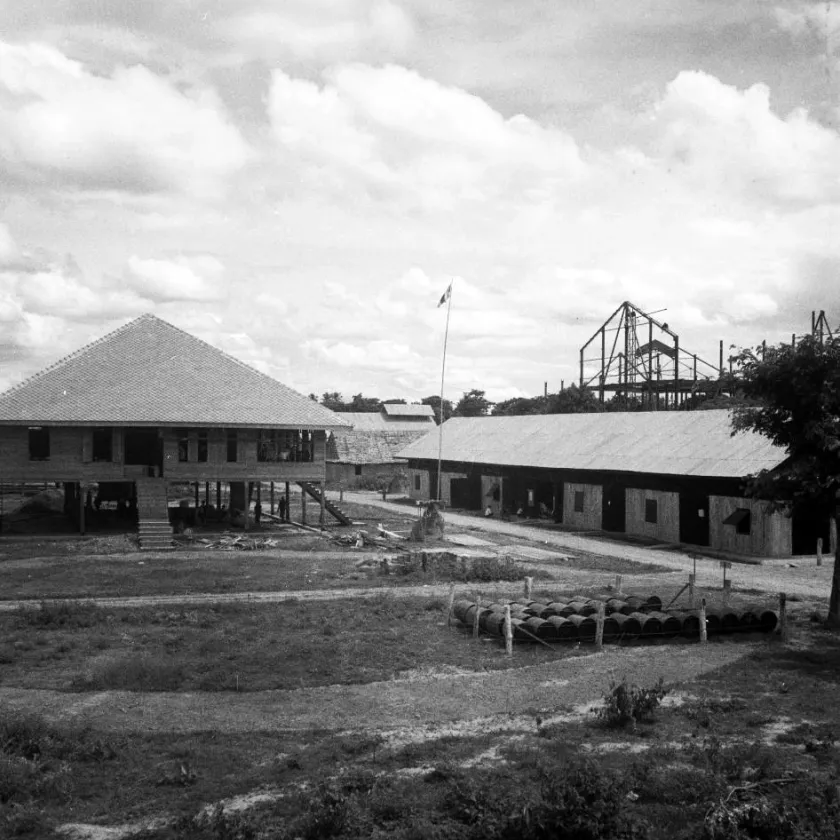The sugar industry in Siam has been evident from foreign documents since the Ayutthaya period as an export commodity, and it flourished the most during the reign of King Rama III through the state's monopoly trade system and the tax farmer system, with the Chinese being a significant force in sugarcane production. However, when European countries developed technology to produce sugar from sugar beets instead of sugarcane, the price of sugar in the world market dropped rapidly. Coupled with the double taxation in Siam, many sugar mills in the country closed down as they could not bear the burden. The sugar industry has declined since the 1890s to the extent that refined sugar had to be imported from abroad for consumption within Siam. As soon as Siam changed its government in 1932, the People's Party had a policy to accelerate economic development within the country under the concept of "Thais produce, Thais use, Thais prosper" by supporting the private sector to open many industrial factories to produce consumer goods for Thai people to use, such as paper mills, textile mills, and even the mining industry. Similarly, the "sugar factory" was seen by the People's Party as an important raw material for food preparation for the development of people's health to be strong in order to be the main force of the nation, no less than meat, milk, and eggs.
In line with the policy of the People's Party, after the 1932 revolution, there were Thai merchants, royalty, and nobles who tried to submit requests to the government to support their sugar factory projects. However, due to various limitations, including production capacity, lack of cost-effectiveness, and management processes, in 1935, the government of Phraya Phahol Pholphayuhasena resolved that the government would operate the sugar production business itself by hiring foreign experts to manage instead of the Thais. Subsequently, the government, led by the Ministry of Economic Affairs, with Colonel Phra Boriphanyutthakit serving as the Minister at that time, opened a bidding for the construction of a sugar factory in January 1936. It was revealed that Skodawerk Company from Czechoslovakia was the winner of the bidding. The reason for setting up the factory in Khao Kha District, Lampang Province, was because Phraya Phahol saw that the area had a large number of Thai farmers growing sugarcane, and he wanted the factory to belong to the Thais (unlike in Chonburi and Nakhon Pathom, which were important sugarcane growing areas, but most of the producers were Chinese). For this reason, the "Thai Lampang Sugar Factory," the first sugar factory of the People's Party, was opened on December 18, 1937, with the operating method being a state enterprise model under the Ministry of Economic Affairs. It had a committee of 6 members, with the Minister of Economic Affairs as the chairman and the head of the industrial department as the manager (Mr. Sai Nithinant was the first factory manager between 1937 - 1944).
The Thai Lampang Sugar Factory achieved rapid success from the beginning, being able to produce up to 4,988 tons of sugar in its second year of operation and becoming a model for the operation of other modern sugar factories in the future. Due to this success, on the occasion of the 25th anniversary of the factory's establishment, the factory employees, merchants, sugarcane farmers, and the public jointly donated funds to construct the "Phraya Phahol Pholphayuhasena Monument" in front of the factory to commemorate his contributions to the factory’s operations. The opening ceremony was held on June 7, 1962. Although this factory no longer produces sugar due to the relocation of the production base to Kamphaeng Phet Province, the monument of Phraya Phahol still remains in perfect condition, and people still bring garlands to pay homage on the anniversary of his death every year (on February 14) to this day. From the starting point of sugar production in the country in Lampang Province, before expanding the production sites to other regions, ultimately resulted in the amount of sugar in the country exceeding the demand. This led to the production of other forms of "sweet products" processed from sugar, such as candy, canned food, and later soft drinks, which corresponded with the intentions of the People's Party government and subsequent governments that aimed for the people to consume more energy from sugar. It also affected the food culture of Thai people, who now prefer "sweet tasting foods" until today.


